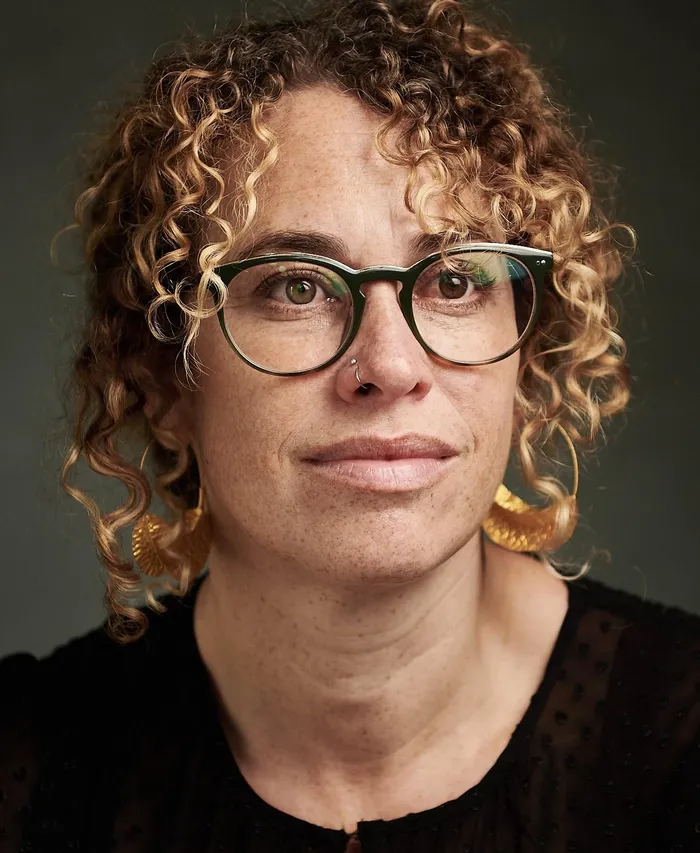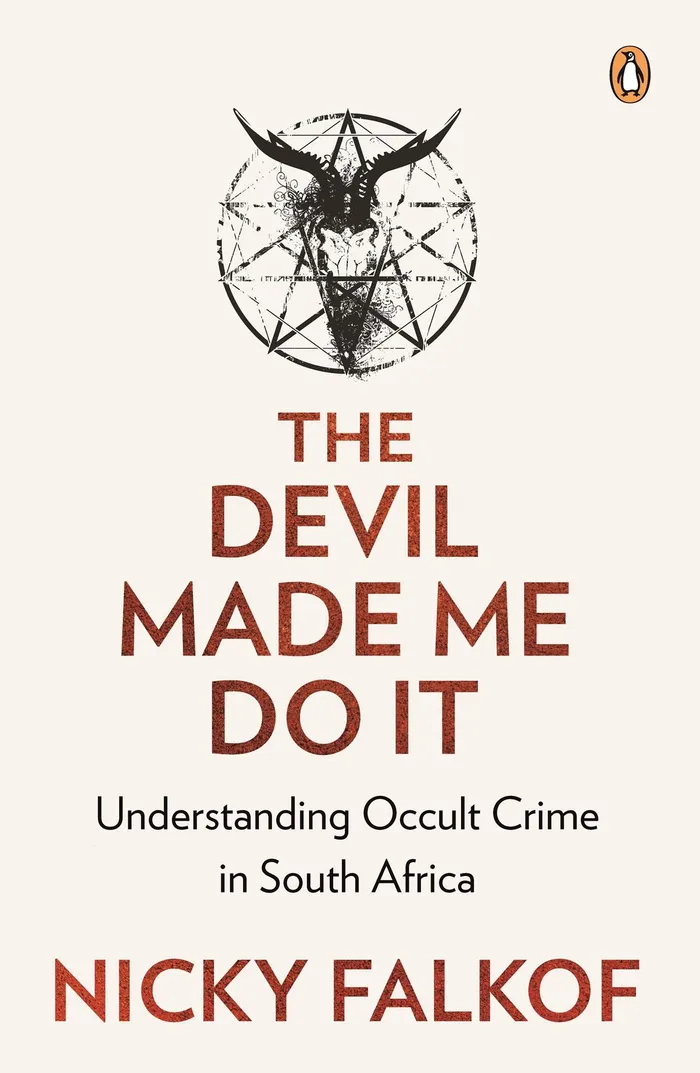Demonic killers and the occult

Nicky Falkov, author of The Devil Made Me Do It.
Image: Supplied
What happens when evil and violence in our society are blamed on a supernatural enemy rather than a feature of human existence in South Africa? From satanist conspiracies and witchcraft accusations to muti murders and demonic possession, a trawl through our national news suggests a society at war with the forces of evil. Why does the occult have such a grasp on our collective imagination?
In this vastly unequal country, with its crises of gender-based violence, child abuse, poverty and unemployment, there are more than enough obvious dangers to our social stability. Why, then, are South Africans so quick to blame the supernatural for violence and misfortune? How do beliefs in occult crime intersect with problems of gender, race and class?
Nicky Falkof's book The Devil Made Me Do It - Understanding Occult Crime in South Africa probes the stories, beliefs and rumours behind the so-called occult crimes that have entranced South Africa’s fractured psyche. They include the murder of a child mistaken for a tokoloshe in the 1920s, the satanic panic that gripped the nation in the 1980s and 1990s, the Krugersdorp cult killings of 2012-16, and the muti murder of a six-year-old girl in 2022.
What can these crimes, and the way they are represented by media, police and other institutions, tell us about South Africa today?

Cover of The Devil Made Me Do It
Image: Supplied
This is an edited extract
On 2 February 2022, a thirteen-year-old boy named Jerobejin van Wyk was reported missing in the town of Klawer in the Western Cape. Days later, his mutilated remains were found on the property of 56-year-old Daniel Smit, who soon admitted to the murder.
Jerobejin was coloured, born and raised in a poor neighbourhood that shadowed the wealthier parts of this still-segregated town. His killer was a white Afrikaner. The boy’s death threatened to shatter the fragile peace of a small farming community and caused outrage across South Africa. While violence perpetrated against children and teenagers is hardly uncommon here, the optics of this case brought it to national attention.
Going back in South African criminal history, on 18 August 2008, 18-year-old high-school pupil Morné Harmse walked into Nic Diederichs Technical High School in Krugersdorp, on the West Rand of Gauteng, armed with a samurai sword. He attacked four people, one of whom died, while the other three suffered serious injuries. In an even earlier case, in September 1992 a woman named Dawn Orso was discovered strangled to death in her Cape Town home. The killers were soon found to be her teenage daughter, Angelique, and Angelique’s 18-year-old boyfriend, Lawrence van Blerk.
It may seem that there is little that unites these disparate killings. The first featured an older white man attacking a young coloured boy in a rural town. The second was an explosion of adolescent rage, set within the supposedly safe confines of a school. The third was an intimate and intentional act of family violence.
What brings them together, however, are the perpetrators’ justifications. In each of these cases, the killer or killers blamed demonic possession for what they had done. Daniel Smit, Morné Harmse, Angelique Orso and Lawrence van Blerk all claimed to have been under the influence of demonic forces when they committed their crimes and so argued that they should not face the full force of the law.
These four are not the only South African killers who’ve claimed that the Devil made them do it, but they are some of the more visible of that sinister demographic. Comparing them can help us understand why violent killers might claim – and might even believe – that demonic possession rather than individual choice was to blame for the horrors they performed.
These three events also illustrate yet again how oversimplified explanations derived from the occult form a kind of mask or screen that we use to avoid the complicated, ethically demanding reasoning that could help us understand how inequity, identity and human relations can drive violent crime.
We begin with the 1992 Orso murder. This story takes place around a scene of astonishing brutality, in which claims of supernatural complicity soon dissolve into a more ordinary, if still-appalling, series of events. Angelique Orso, then just 16 years old, had spent months butting heads with her mother, Dawn.
Dawn was worried about her daughter’s relationship with Lawrence van Blerk (reporting at the time calls the pair “lovers” which suggests that they were sexually active), and about her problems at school. Angelique had been wearing black and burning strange candles, two of the signs that cropped up repeatedly in dire warnings from Satan-hunters. Dawn became so worried about the girl’s interest in the occult that she engaged the help of a psychiatrist, who put Angelique on medication.
Dawn’s concerns were probably exacerbated by Angelique’s early life, which had been marred by the violence enacted by her biological father, long gone by the time the family imploded. Lawrence, too, was a child of domestic violence, frequently suffering brutal beatings at the hands of his high-achieving father. Things came to a head one evening in September 1992, when Angelique arrived home with Lawrence and assumed that he would spend the night. Furious, Dawn refused to let him stay and apparently called her daughter a whore.
After this argument, Angelique enlisted her boyfriend to help her get rid of her mother. The next day, while Dawn’s fiancé Henry was out, the teenagers walked into Dawn’s bedroom where she was still sleeping. They started beating her with a frying pan and a coat hanger rail. When she lost consciousness, they slashed her wrists with a knife and immersed her head under water in the bathtub. Finally, they tied her hands and feet with pantihose and wrapped a black plastic bag around her head. They used a wheelbarrow to take her body outside into the garden and buried her in one of her own flowerbeds.
The couple then went on the run to Knysna, after insisting to Angelique’s putative stepfather that they had no idea where Dawn was. Henry smelled a rat, started looking around, and the body was soon discovered. It did not take long for Lawrence and Angelique to be picked up by police who referred to “satanic paraphernalia” found during the investigation and called the killing a “satanist murder”.
These assumptions were almost certainly linked to Angelique’s reputation and her interest in the occult, and they impacted on how the murder was reported and on the presumed motivations behind it. The couple, but more particularly Lawrence, leaned hard into this narrative in their defence, claiming they “had acted involuntarily because they had been possessed by demons at the time”. Van Blerk told the court that he had been “influenced by an unknown force, probably to do with Satanism”, and had felt “possessed by the devil inside”.
In his judgment, Justice Williamson stated that: “The court accepted that people could become possessed by demons, but the testimony concerning this had not been convincing and the actions of both accused had been far too goal-orientated … In Van Blerk’s case, the court felt that his testimony about demonic possession ‘just doesn’t make sense’.”
For Angelique and Lawrence, the judge ruled, the claim of possession failed, as their act of violence had had a clear goal and they had done what they could to cover it up, meaning that they obviously knew it was wrong. Rather than being a tragedy born of demonic forces, Dawn Orso’s bloody murder was the consequence of a more anodyne story, the stuff of straight-to-Netflix true-crime documentaries.
According to the judge, “Van Blerk had formed a relationship with Orso, believing that she needed his help, but that he had instead fallen under her spell as she had emerged the stronger in character. She had domineered [sic] and manipulated him”.
The head of forensic psychiatry at Valkenberg Hospital, Professor Tuviah Zabow, agreed. According to reporting: “He said that neither of them was suffering from a mental disorder at the time of the murder, and that they were driven purely by their feelings of hatred and anger towards their parents. He also said Angelique was particularly intelligent and mature for her age, and that she had manipulated Lawrence to a certain extent.”
This, too, is a familiar story: a charismatic young woman playing the damsel in distress, a lovestruck young man falling under her influence, two damaged teenagers with histories marred by domestic violence, and one tragic decision. We must remain wary, however, of easy explanations. The femme fatale narrative may be just as convenient a way of explaining what happened as the couple’s claims of being possessed.
- Nicky Falkof is a writer and professor of Media Studies at Wits University. She has a PhD in Interdisciplinary Humanities and Cultural Studies from the London Consortium, part of Birkbeck College,University of London.
- The Devil Made Me Do It is her fourth book and is published by Penguin Random House with a recommended retail price of R280. For more information, visit nickyfalkof.com.